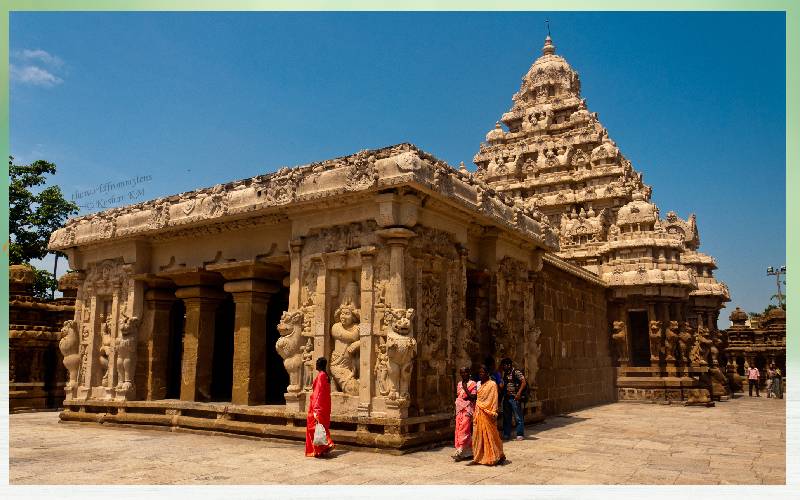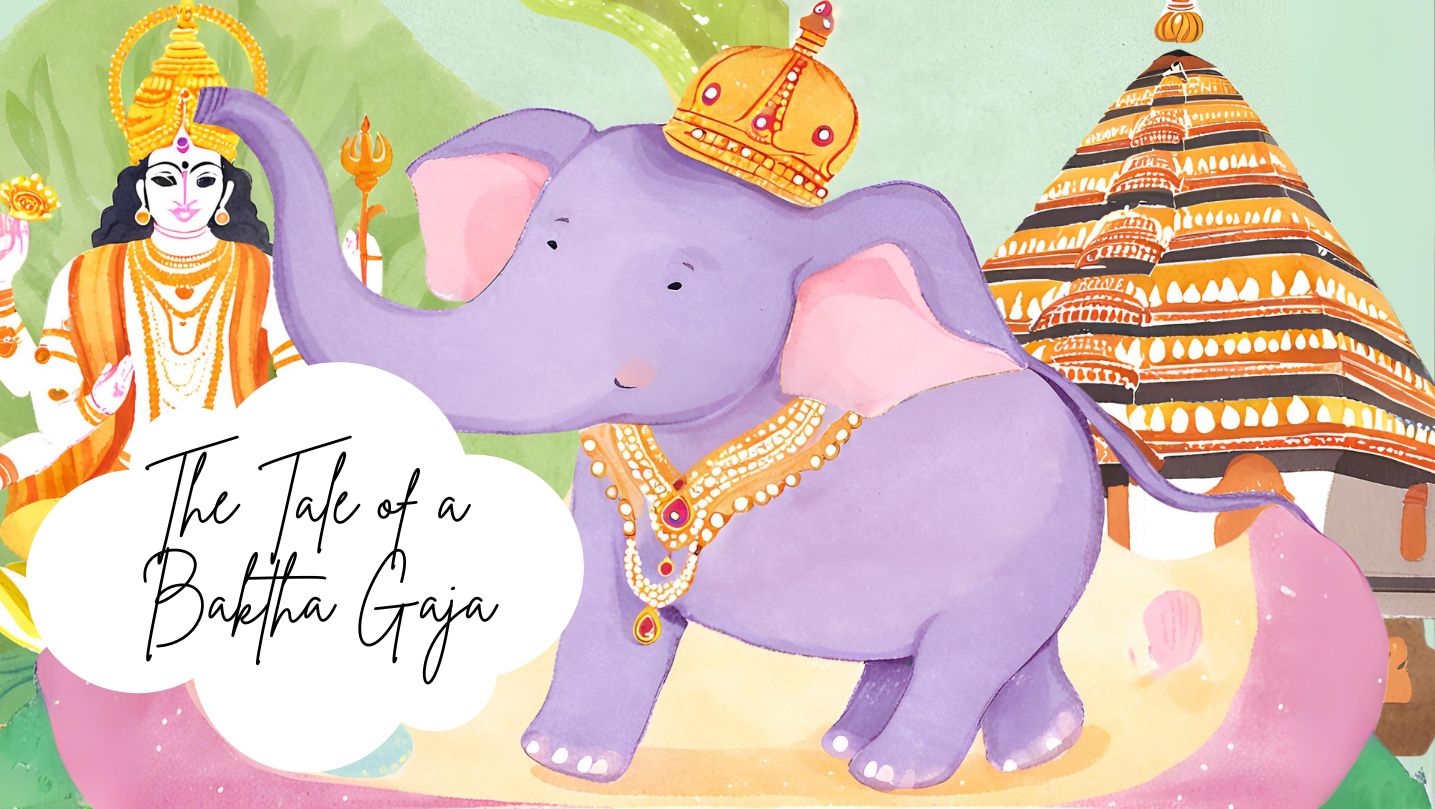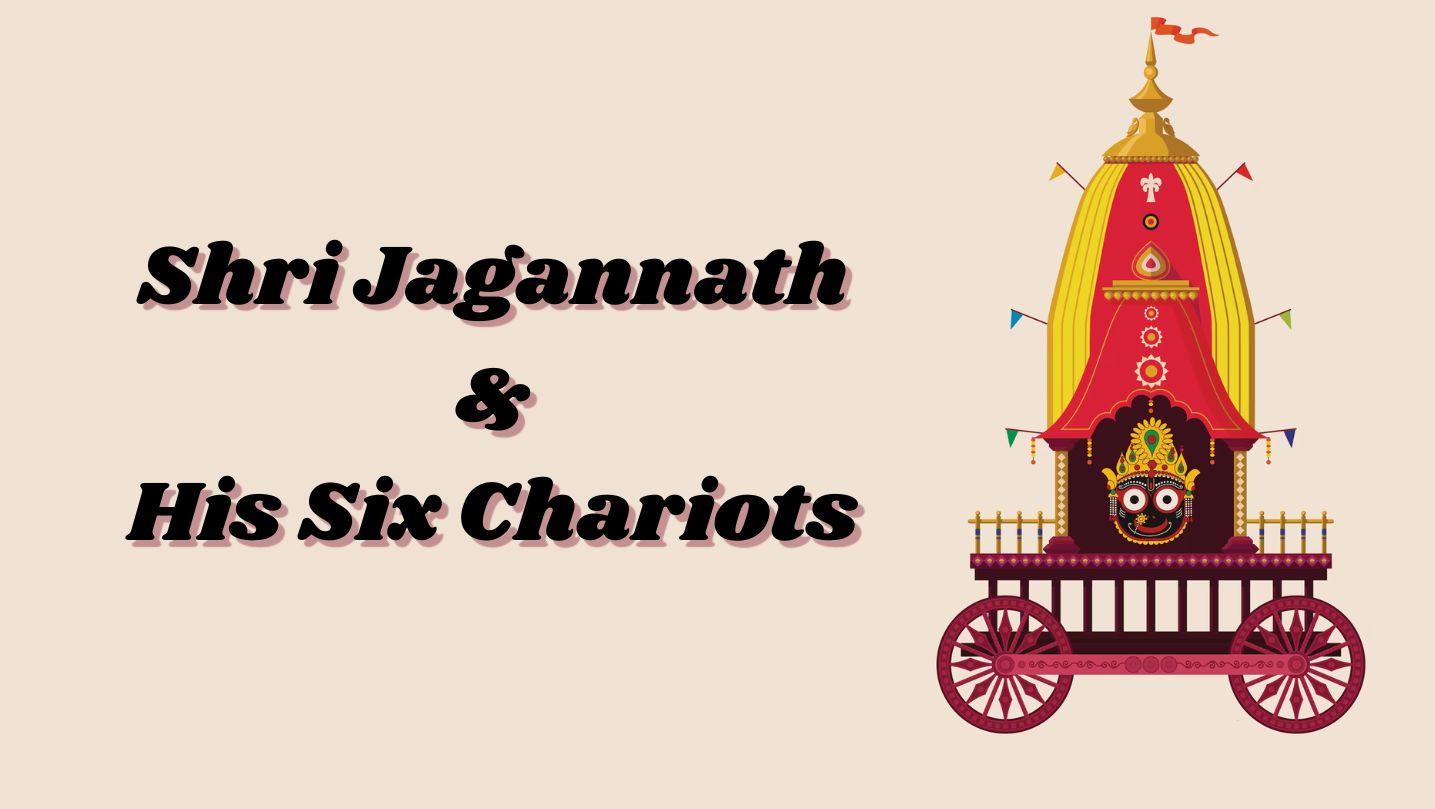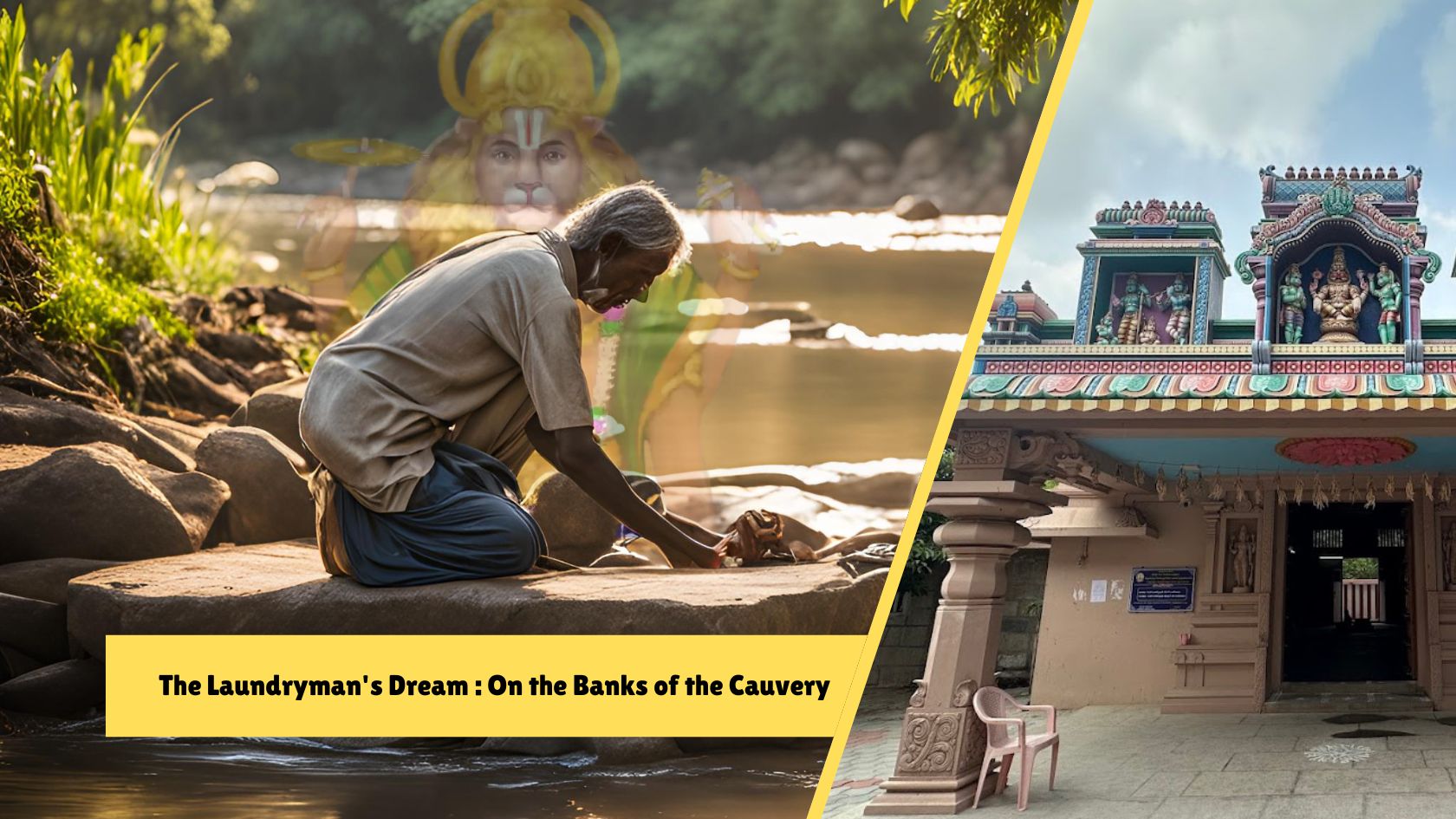The Primordial Paragon
Kailasanathar Temple
It was on a fine day when Dr. Chithra Madhavan spoke about the Kailasanathar Temple at the Kasthuri Srinivasan Art Gallery and Textile Museum. She had taken a keen interest in history right from her school days and now teaches at Dakshinachithra, Asian College of Journalism and the Kalakshetra at Chennai. The eminent historian has been a recipient of a number of grants from the Government of India. Her talk on the Kailasanathar Temple at Kanchipuram was accompanied with a good photo exhibition on the same by Amar Ramesh of Chennai. The photos of the Kailasanathar Temple were fabulous and the virtual reality facility provided at the exhibition furthered the quest for such events.
The Kailasanathar Temple was built by Narasimhavarma II (691 -728 A.D) who was also popularly known as Rajasimha . The temple had been built using sandstone by the architects and craftsmen belonging to the Pallava period. The talented geologists of the time had provided the stones for construction by excavating the same. However, the base was made of granite which happens to be found abundantly in Tamil Nadu. The Pallava Empire straddled much of Tamil Nadu and parts of Andhra Pradesh. It was a multilingual administration and the Pallavas were among the earliest to use stones for temple construction. The Kailasanathar Temple was preceded by the shore temple at Mamallapuram and the Pallava rulers built finely crafted mid-sized temples during their reign.
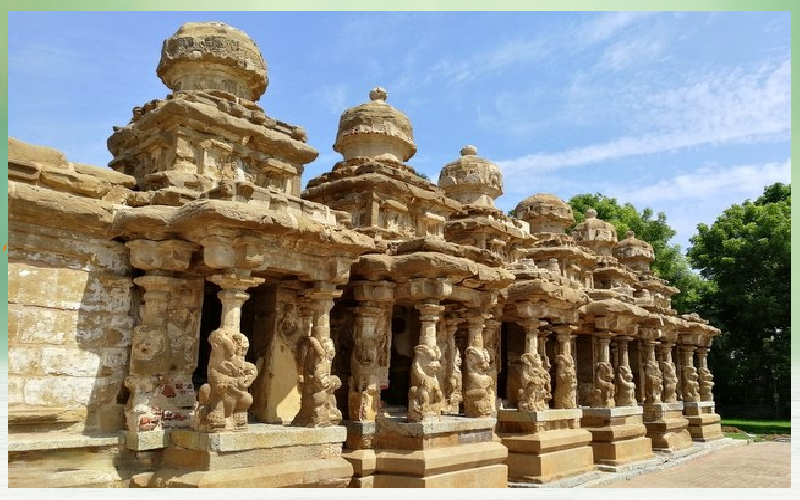
"The Kailasanathar Temple was originally named as the Rajasimheswara Temple and it is not known how it got the name in vogue. The temple has 58 small shrines around it, and it has a number of prancing lions which add to its beauty. All the 58 shrines house a Shivalingam with Somaskanda in the rear wall. The Somaskanda represents Lord Shiva with Parvathi and baby Skanda. Some of the shrines are endowed with Uma Maheswara instead. The five shrines at the entrance could have been part of another set of shrines forming part of one more circumambulatory passage that were perhaps destroyed or not completed. Interestingly the shrine of Mahendravarmeshwara known as Mahendravarmeshwara Griham found at the entrance was built by the son of Rajasimha. One can get to see the small gopuram at the entrance and this perhaps was the ancestor to the Rajagopurams that evolved over the next 1000 years. The temple stands today solely due to the efforts of the Archeological Survey of India and prayers are being offered regularly by the priests," spoke an enthusiastic Dr. Chithra Madhavan.
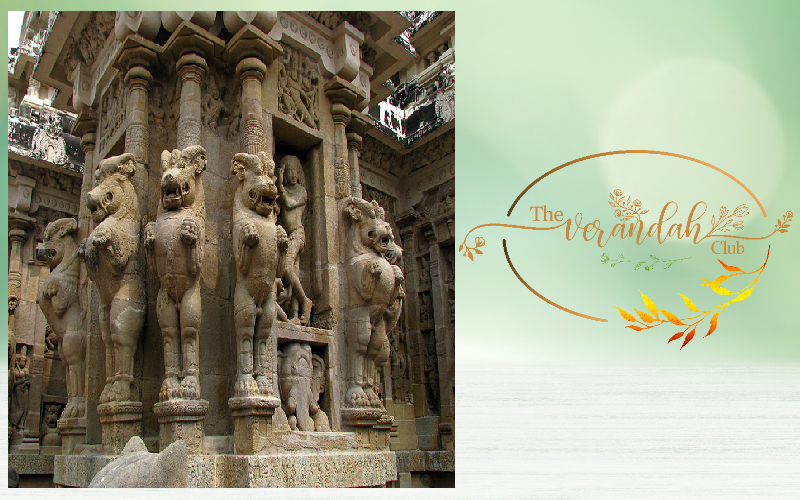
"India has been a place of learning from time immemorial and not many seem to be aware of the fact that it was a national phenomenon. People generally assume that the places of learning were at Takshashila, Vikramashila, and Nalanda in North India, however Kanchipuram was a place of learning where students were taught logic, philosophy, science and mathematics for millennia. The Kailasanathar Temple in particular was a place of higher learning and select students were empowered further at the "Ghatika" in this temple. The front mandapa used to double up as the place of learning and it has inscriptions belonging to the Pallavas, the Chalukyas, the Cholas, and the Vijayanagar Empires. It’s amazing to notice the beautiful inscriptions which resemble fine pieces of art. Some of them are the finest forms of calligraphy etched on stone and they are found in various scripts and languages. The visitor is exposed to the fact that Rajasimha was known through 300 titles through the inscriptions. Mayura Sharma, who happened to be the student of Veera Sharma of Karnataka came to the Ghatika at this temple as part of his higher education. Mayura Sharma happens to be the founder of the Kadamba kingdom," added Dr. Chithra.
The Kailasanathar Temple is blessed with 7 shrines known as ‘Anga Alayams’ and it appears that the whole temple was richly painted by the Pallavas. The temple represented the zenith of Pallava art and architecture. Once upon a time, the Chalukya ruler, Vikramaditya conquered Kanchipuram and on seeing the lovely Kailasanathar Temple, he decided to leave the city undisturbed. Further to that, he gives away his personal wealth to the temple and it is nice to know from his inscription that the person destroying his endowment will earn the sin of killing the scholars at the "Ghatika”.
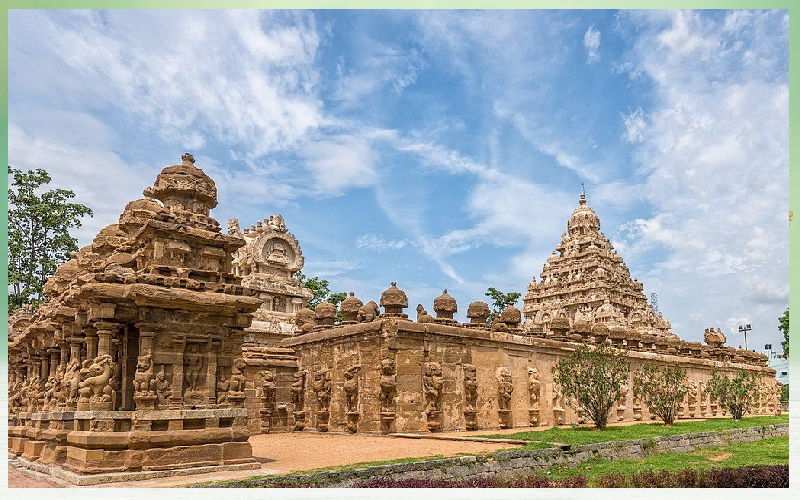
Earlier it was held normally held that sinners would earn a sin equivalent to killing a cow on the banks of the River Ganges. Finally, Vikramaditya took away the temple architects from the Pallava kingdom in order to build the Virupaksha Temple at Pattadakkal. The Frescos of the Kailasanathar Temple were created by the Pallavas and centuries later Kumara Kampanna of Vijayanagar got them restored. An unnecessary mandapam had been added centuries later.
"The Kailasanathar Temple is the prettiest one in India and one of the inscriptions states that the beauty of Mount Kailash at Manasarovar is overshadowed by it. The temple has a number of sculptures of prancing lions and bulls which were once the emblems of the Pallavas. The panels depicting the Saptamathrukas, dancers, and drummers are fabulous. The deity Durga, Mahishasuramardini is found in gay abandon nowhere else but here.
Lord Yoga Dakshinamurthy is found under a banyan tree as in a forest in the company of animals like the deer and tiger. Tripurantaka and Bikshatana are found in their best forms while the Kalasamharamurthy is simply great. There are number of dance poses which are as per the ‘Natya Sasthra’ of Bharata Muni.
Rajasimha is known to be a great admirer of music and dance and his queen, Rangapataka is also said to have contributed towards the construction of the shrines. The sculptures represent life-like situations and we can see a number ganas dancing. A huge bull is found in the same area and the narrow circumambulatory path around the sanctum represents a womb-like structure. When we go through the inscriptions, we get to learn that Rajasimha was also known as Raja Raja! Since he could train elephants like a wizard, he was known as ‘Nagapriya’, for Elephants are also known by the epithet Naga. The temple is found in nice surroundings which have not changed in centuries and the lovely tank is part of the repertoire", stated the amazing historian, Dr. Chithra Madhavan.
The presentation on the temple includes a picture of the sculpture of Goddess Lakshmi with a golden hued face. This is as per the injunctions found in the scriptures. The panel depicts the episode, ‘Kiratarjuneeyam’, is quite prominent. The temple looks like a photo shoot for the nameless sculptors and architects have depicted the musicians, dancers, and characters from Indian mythology in the most natural manner. The Gajasamharamurthy panel, the panels containing images of Ravana and the panels depicting the various dancing postures can be part of any dance study.
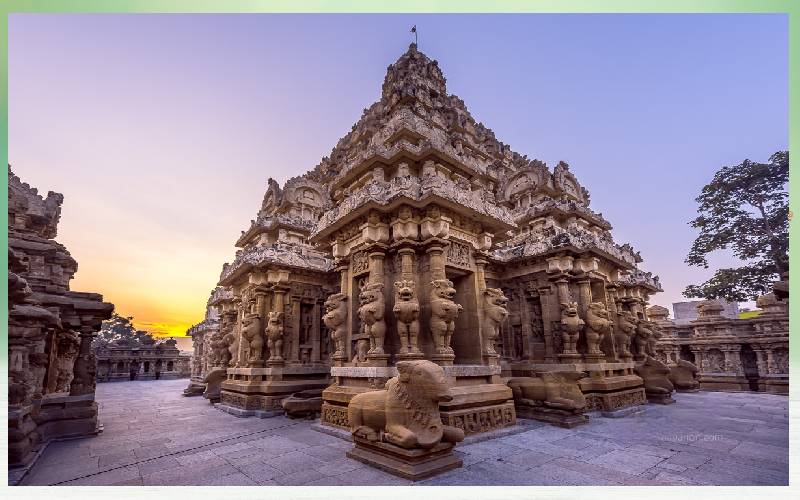
Dr. Chithra Madhavan further added that textile designers, scholars pursuing a Doctorate on ancient musical instruments will find the temple to be a treasure trough. The East facing temple and its garland like 58 shrines were our national asset and the good historian requested us to add to our heritage by visiting the temple or at least by admiring it on any given opportunity either in person or by participating in an exposition connected with it. Amar Ramesh had done complete justice through the exposition which contained priceless photographs done by him .
"On the completion of the Kailasanathar Temple, Rajasimha Pallava had fixed a date for the Kumbabishekham but Lord Shiva graced the ruler in his dream by requesting him to celebrate it on another day for he had to attend one more on the same day. The ruler obeyed the divine diktat. However, he wanted to visit the temple and the occasion prioritized by Lord Shiva. Therefore, he conducted an extensive search and was surprised to discover one Poosalar or Poosala Nayanaar had built a temple for the Lord in his heart by placing brick after brick as per the sastras for he lacked adequate resources. The Hridayaleeswarar Temple at Thirunindravur was built in accordance with the wish of the great devotee, Poosalar by Rajasimha", said Dr. Chithra Madhavan while extolling the intentions, virtues and abilities of the people of ancient India.
